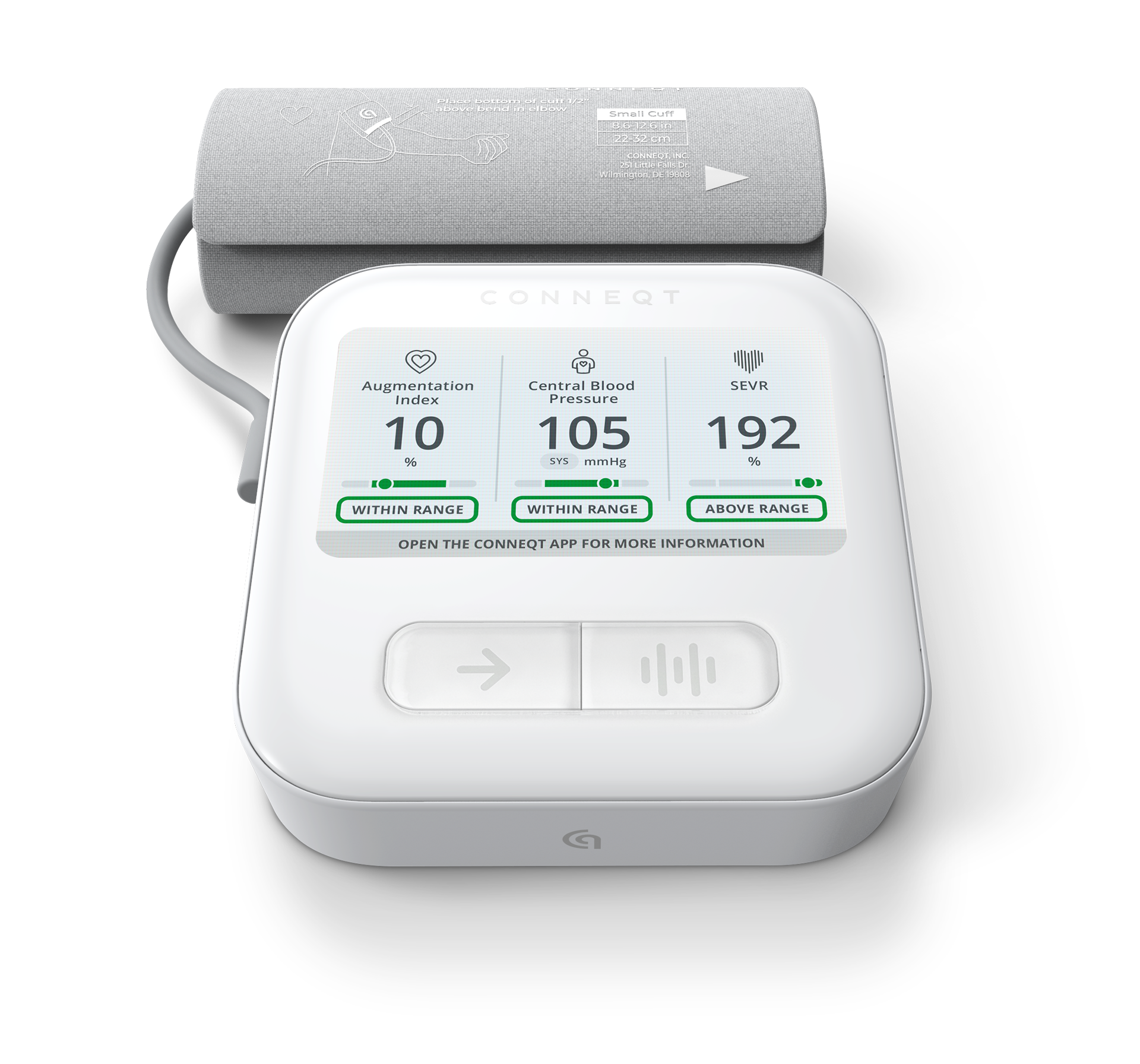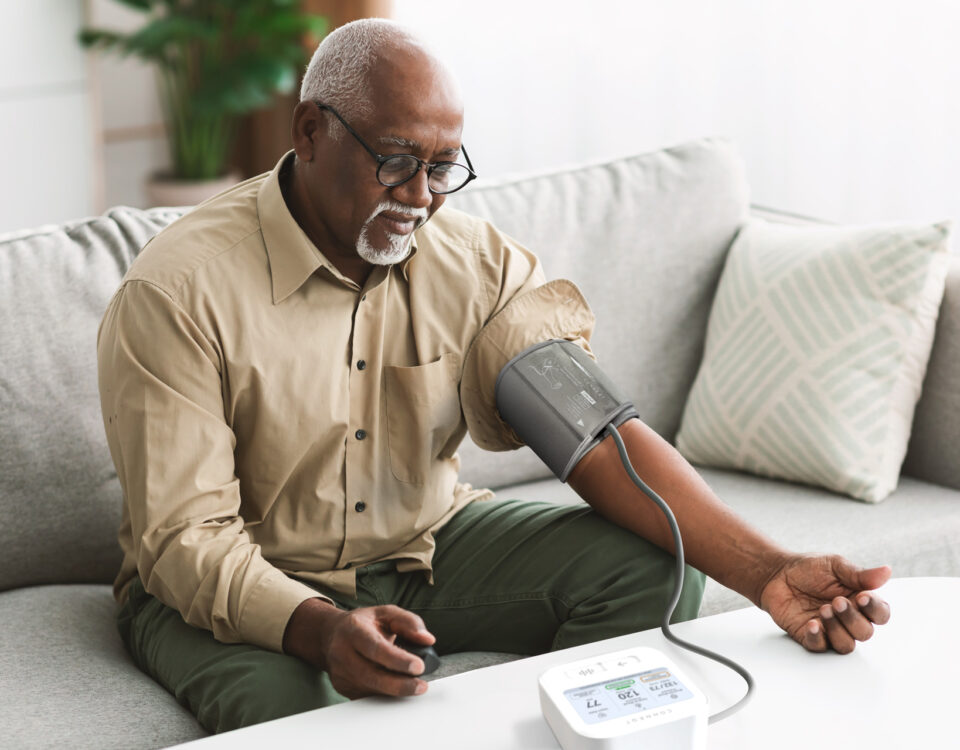Why Long COVID Recovery Can Mask Hidden Heart Strain
One of the most frustrating parts of long COVID is how unpredictable it can be. Some people experience lingering symptoms for months, or even years. Others feel like they’ve recovered—only to face new cardiovascular issues later. But increasingly, research shows that vascular dysfunction can persist beneath the surface, even when you feel fine.
What the Research Reveals About Post-COVID Heart Function
Multiple studies have found that arterial stiffness, central blood pressure, and oxygen delivery to the heart can remain impaired well after infection—even in people without ongoing symptoms. This disconnect between how you feel and what’s happening inside your arteries is part of what makes long COVID so difficult to recognize and manage.

Measure what matters
Save 20% on checkout with code VITALITY
And it’s not just about vascular strain. Autonomic dysfunction—sometimes called dysautonomia—can quietly disrupt heart rate variability, blood pressure regulation, and circulation. In one prospective study, long COVID patients showed reduced heart rate variability and impaired ventricular-arterial coupling six months after infection, despite improvements in other clinical metrics.
That’s why arterial monitoring matters during recovery and beyond. These aren’t just numbers on a chart—they help explain why you still feel off, why exercise feels harder than it used to, or why your blood pressure hasn’t stabilized. Even if your symptoms are gone, your vascular system might still be under stress.
How Arterial Health Impacts Energy and Aging
Long COVID isn’t just a lingering illness—it’s a stress test your vascular system didn’t ask for. And while symptoms like fatigue or brain fog may fade, the cardiovascular effects can persist quietly beneath the surface.
Traditional metrics like cholesterol or brachial blood pressure often miss these early changes. But with dynamic markers—like central blood pressure, augmentation pressure, and SEVR—you can gain insight into how your arteries are adapting. These were once reserved for hospital settings, but the CONNEQT Pulse makes them accessible from home.
If you’re already investing in nutrition, strength training, or sleep optimization to support your longevity, your arterial health is the missing piece. Because the health of your arteries doesn’t just predict cardiovascular events—it shapes your energy, your resilience, and how well you age.
Your vascular system fuels everything from cognition to kidney function. When it falters, it doesn’t just raise your cardiovascular risk—it cuts directly into your vitality and how you show up every day.
What You Can Do Now to Support Vascular Recovery
You don’t need a prescription to support your recovery. Here are a few science-backed ways to improve vascular health post-COVID:
Start Monitoring with CONNEQT Pulse
Track central blood pressure, augmentation index, and SEVR regularly. The earlier you spot changes, the easier they are to address.
Move Daily—Even if Light
Low to moderate exercise, like walking or cycling, helps improve arterial elasticity, reduce inflammation, and support your nervous system.
Cut Back on Alcohol
Heavy drinking is associated with increased arterial stiffness and vascular aging. Even modest reductions can make a difference.
Support Your Nervous System
Breathing exercises, gentle stretching, and stress-reducing routines can help rebalance autonomic function and improve oxygen delivery to the heart.
Small shifts, done consistently, can make a lasting impact—especially when tracked over time.
Eat for Arterial Resilience
A Mediterranean-style diet supports endothelial function, blood pressure regulation, and long-term vascular health.
Why Arterial Monitoring Should Be Part of Your Longevity Plan
Beyond Cholesterol: Modern Vascular Metrics
Long COVID recovery isn’t just about resolving symptoms—it’s about understanding the hidden systems that may still be under stress. Arterial health is one of the clearest windows into how your cardiovascular system is coping, and how it may shape your health trajectory moving forward.
If you’re already focused on things like nutrition, fitness, and sleep, adding arterial monitoring closes an important loop. It’s one of the few ways to make invisible recovery visible—and ensure that your longevity plan includes what matters most.
Because this isn’t just about how you feel today. It’s about how your cardiovascular system is doing post-COVID—or how it’s holding up as you age. Arterial health is measurable, trackable, and modifiable. The tools are in your hands.
The Missing Piece in Your Longevity Routine
If you’re already investing in your future through nutrition, sleep, or supplements, monitoring your arteries is the missing link in your longevity stack—and with the CONNEQT Pulse, it’s never been easier to track what really matters.






